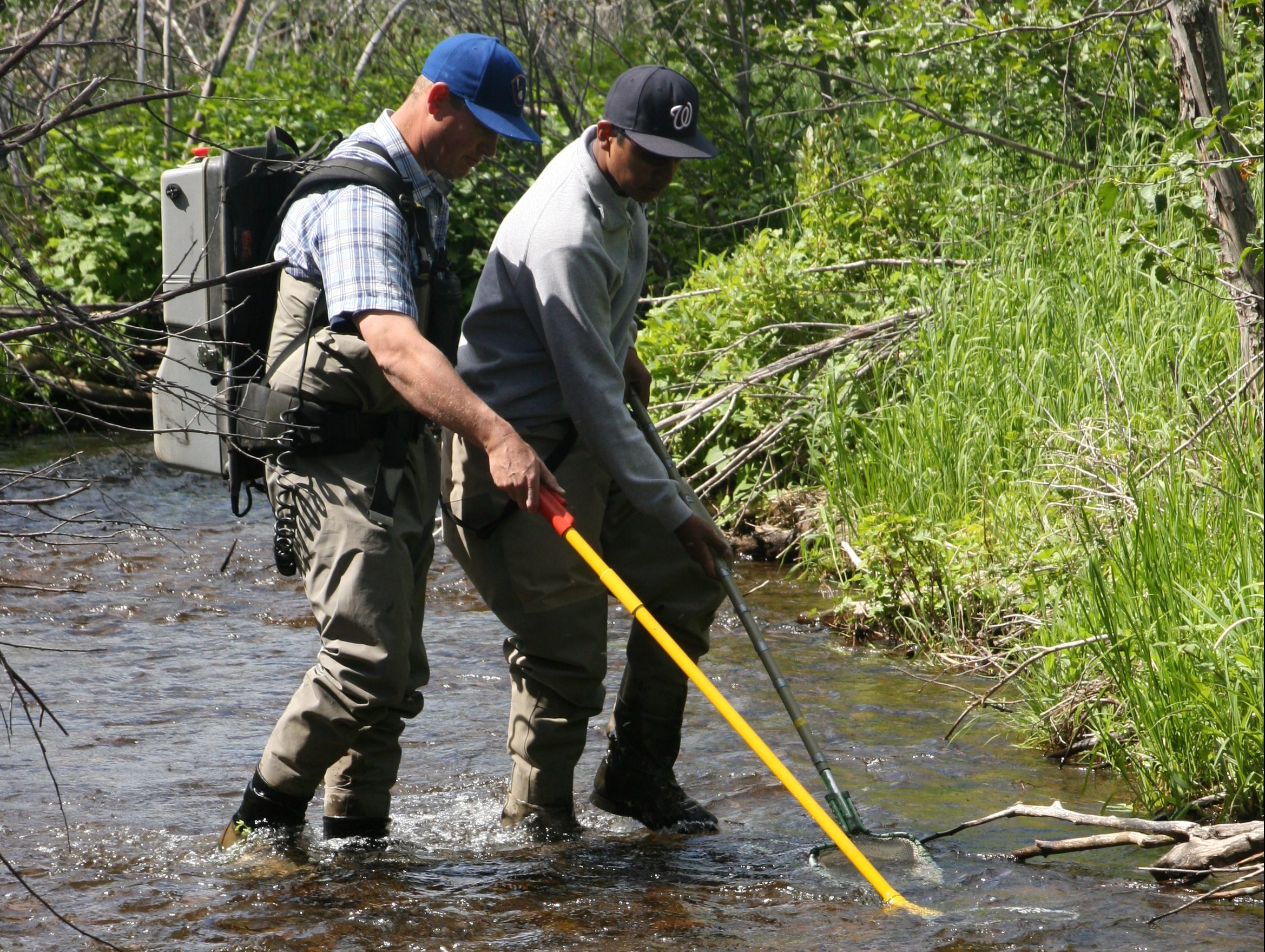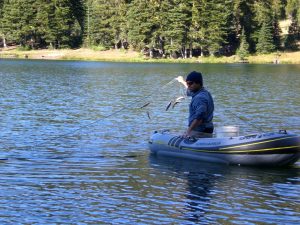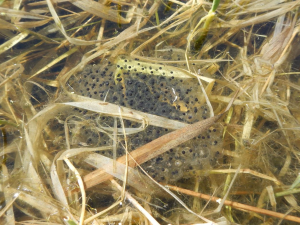Bonneville Power Administration Project 1997-019-00
Evaluate the Life History of Native Salmonids in the Malheur Subbasin
Selective Removal of Brook Trout in Lake Creek and High Lake
Brook trout encroachment has contributed to the Upper Malheur River bull trout population being classified as having a high risk of extinction. Removal of brook trout is essential to reduce the threats of competition, hybridization, and population expansion. Brook trout in High Lake and its outlet stream (Lake Creek) are recognized as source populations for the spread of brook trout throughout the Upper Malheur watershed. In 2010, the BPT initiated a suppression project to eliminate brook trout from High Lake and its outflow area. Visit our interactive maps for more information.
 |
 |
Stream Temperature Monitoring
The BPT collects water quality/quantity data from locations throughout the Malheur River Subbaisn to: 1) evaluate the effectiveness of habitat improvements (e.g., riparian plantings and livestock exclusions), 2) assess the suitability of locations for life history stages of extant and extirpated native fish, and 3) identify areas that may benefit from restoration. Visit our interactive maps for more information.
Amphibian and Macroinvertebrate Surveys
Because the effects of chemical treatments to control invasive fish are not always limited to the target species, U.S. Fish and Wildlife Service Tribal Wildlife Grant funding was used to collect baseline data on the presence of amphibians and macroinvertebrates in the Upper Malheur River. The baseline data were useful during the development of the suppression study design and will allow the BPT to assess the effects of the treatment, following the application, on non-target amphibians and benthic macroinvertebrates in High Lake and its outlet stream (Lake Creek). The BPT intends to monitor taxa diversity and population numbers during the post-treatment period to assess whether estimates are comparable to those recorded prior to the treatment.

Monitoring Brook Trout Using Environmental DNA (eDNA) in Lake Creek and High Lake
Since 2012, the BPT has been using U.S. Bureau of Reclamation Native Affairs funds to implement eDNA analyses to assess brook trout distribution in Lake Creek/High Lake and to assist with identifying prioritized areas for suppression efforts. The eDNA technology will allow for the effectiveness of the removal efforts to be monitored through the presence/absence of brook trout DNA.
Fish Distribution and Presence in Little Malheur River
Collaborative Forest Landscape Restoration Plan funds were awarded to the U.S. Forest Service Malheur National Forest, and subsequently as a subcontract to the BPT to support documentation of fish presence and distribution in the Little Malheur River.
